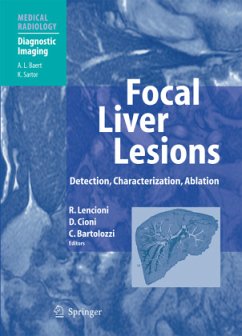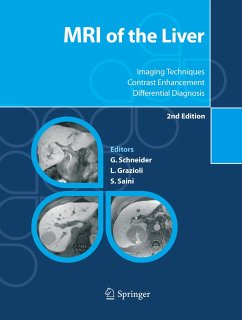
Hepatocellular Carcinoma and Liver Metastases: Diagnosis and Treatment

PAYBACK Punkte
20 °P sammeln!
Liver surgery has made extraordinary progress over the past 40 years, evolving from the first, timid partial resections in the 1950s to today's major resections and organ transplants. Examining the rea sons for this progress, one cannot but be impressed by the substan tial role that has been played by radiology. Formerly, preoperative planning was based on only nebulous scintigraphic scans. Today, surgeons have at their disposal a wide variety of radiological modalities for diagnosis and topography which are precise enough to exclude most operative surprises. Fur thermore, the radiologist is b...
Liver surgery has made extraordinary progress over the past 40 years, evolving from the first, timid partial resections in the 1950s to today's major resections and organ transplants. Examining the rea sons for this progress, one cannot but be impressed by the substan tial role that has been played by radiology. Formerly, preoperative planning was based on only nebulous scintigraphic scans. Today, surgeons have at their disposal a wide variety of radiological modalities for diagnosis and topography which are precise enough to exclude most operative surprises. Fur thermore, the radiologist is becoming increasingly involved in ther apy: prior to operation for tumor reduction by embolization and after resection for treatment of local complications - which could otherwise necessitate difficult and occasionally dangerous reoper ations. As the author writes in his preface, it is not really astonishing that a radiologist is publishing a book on this topic, and he must be congratulated for his work-up, which combines important personal experience with a complete analysis of published papers on this topic.














